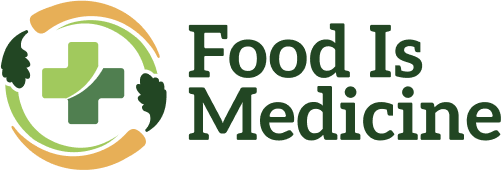How to Partner With CBOs
As the health care landscape evolves to adopt health-related social needs (HRSN) interventions and innovative Food Is Medicine initiatives, CBOs emerge as indispensable allies in this paradigm shift. Their deep-rooted community connections act as a bridge between institutional health care and the experiences of diverse populations, providing an intimate understanding of local needs and resources. Furthermore, CBOs serve as cultural translators, ensuring that Food Is Medicine interventions resonate with the communities they aim to serve.
State and Federal agencies are increasingly fostering partnerships with CBOs to integrate medical, behavioral, and social health services. The Centers for Medicare & Medicaid Services support these integrations with new guidance and demonstration opportunities. Section 1115 Demonstrations allow states to test new approaches in Medicaid service delivery, including addressing HRSNs.
States can expand the range of services and supports available to certain Medicaid beneficiaries, encouraging a more comprehensive approach to health and creating opportunities for CBOs to offer HRSN services that have traditionally been outside the scope of Medicaid coverage. These demonstrations also require the development of evaluation criteria to ensure CBOs meet utilization and quality standards for HRSN programming.
Medicaid Managed Care Organizations have the option to offer services or settings as an alternative to those covered under the state plan as ILOS traditional services addressing HRSNs, which may not be covered under standard Medicaid benefits. ILOS, with many states requiring managed care organizations to conduct HRSN screenings, make referrals, and partner with CBOs to deliver services within community settings.
Effective collaboration between CBOs and health care organizations can be challenging due to differing operational, technological, and financial models. The Center for Health Care Strategies recommends that state Medicaid agencies create roles for CBOs in transformation initiatives, establish dedicated funding, and ensure access to addressing and tracking HRSNs services. They also suggest that CBOs may benefit from receiving technical assistance and tailored resources to develop necessary infrastructure. Investment in shared technology platforms can facilitate secure data-sharing.
Case Examples
State Medicaid agencies emphasize the need for and importance of health systems collaborating with community partners to address HRSNs.
Through their policies and operations, state Medicaid agencies have emphasized the importance of CBOs as essential components of the health care value chain through key policy opportunities explained below.
In Lieu of Services (ILOS)
Michigan Medicaid Health Plans
In October 2024, Michigan’s Medicaid Health Plans will have the opportunity to begin offering ILOS [PDF - 193 KB] that address certain beneficiaries’ food and nutrition-related needs. Community partnerships are essential to ILOSs, as plans will be required to develop and maintain a network of providers for service delivery. In their draft ILOS Policy Guide [PDF - 607 KB] released in July 2024, the Michigan Department of Health and Human Services stated its preference and requirements for plans to contract with Michigan-based community organizations:
MDHHS has a strong preference for ILOS Providers to be locally based. However, MDHHS recognizes that locally based ILOS Providers may need to develop infrastructure, capacity, and experience to deliver ILOS. In contract year 2025, MDHHS is requiring at least 30% of ILOS are provided by locally based ILOS Providers.
To be a locally based ILOS Provider, an organization must:
- Be a CBO
- Have a physical presence in Michigan, defined as having one or more office locations in Michigan ― preferably in the Region(s) the ILOS is provided
- Participate in the Michigan food economy
Throughout the planning of its ILOS implementation, the Michigan Department of Health and Human Services engaged the community in various ways. In March 2024, it released a Request for Information seeking public feedback on its four proposed evidence-based ILOSs [PDF - 320 KB] to address enrollee’s HRSNs, as well as their proposed populations that would be eligible for such services. The agency also sought input from external partners [PDF - 2.4 MB] upon drafting the ILOS Policy Guide in July 2024.
California Department of Health Care Services
The California Department of Health Care Services strives to create a more coordinated, person-centered health system through California Advancing and Innovating Medi-Cal (CalAIM). One of CalAIM’s key initiatives is Community Supports [PDF - 544 KB] (also known as ILOS), medically appropriate and cost-effective substitute services to traditional services or settings provided by Medi-Cal Managed Care Plans to help members address their HRSNs.
Medi-Cal Managed Care Plans are required to partner with CBOs to offer Community Supports and create a robust provider network for their 14 Community Supports services. CalAIM relies on community-driven referrals and connections. From the California Department of Health Care Services:
By the end of Q2 2023, managed care plans reported having approximately 1,374 provider contracts active for Community Supports.
Section 1115 Demonstrations
North Carolina
North Carolina pioneered one of the nation’s first initiatives to address HRSNs through its Healthy Opportunities Pilot program utilizing a Section 1115 Demonstration. Operating in three select regions of the state, each region is overseen by a designated Network Lead tasked with establishing and managing a network of Human Service Organizations consisting of CBOs or social service agencies.
Network Leads contracts with Human Service Organizations to deliver 29 pilot services in their respective regions, providing them with training, technical support, and quality oversight. Through a strong public-private partnership between the North Carolina Department of Health and Human Services and the Foundation for Health Leadership & Innovation, the first statewide coordinated care network known as NCCARE360 [PDF - 2.9 MB] was created.
Uniting health care providers, managed care organizations, CBOs, and local health departments, NCCARE360 provides a shared technology platform that facilitates electronic referrals, real-time client communication, secure information sharing, client outcome monitoring, and accountability in service delivery with community partners.
Oregon
Oregon's Section 1115 Demonstration underscores the critical role of CBOs in delivering HRSN services, emphasizing culturally appropriate, responsive, and trauma-informed care. The state was approved to receive community capacity-building funding for CBOs, dedicated to investments supporting HRSN infrastructure for service delivery. These funds will be distributed to HRSN providers through a collaboration between the Oregon Health Authority and coordinated care organizations. Leveraging the Connect Oregon, the state’s coordinated social care network, nine coordinated care organizations across Oregon are adopting a scalable payments solution to streamline the community reimbursement process and build capacity for community-based providers. Additionally, the Oregon Payments Workgroup is working to standardize workflows and processes for implementing HRSN benefits, which will help CBOs integrate more seamlessly into the system.
Private Payer Partnerships with CBOs
Partnering with CBOs enables payers to take a more comprehensive approach to healthcare by addressing HRSNs. By leveraging CBOs' invaluable knowledge and relationships, payers can develop tailored partnerships, enhance health plan offerings, and strengthen the delivery of non-medical services. Through California Advancing and Innovating Medi-Cal, managed care plan contracts with CBOs to provide Community Supports, with nearly 2,500 provider contracts launched since implementation began. Analysis of 19 California health plans showed that over half had contracted with national for-profit companies to offer Community Supports or Enhanced Care Management services, suggesting that CBOs with substantial financial resources are more likely to secure contracts.
Conclusion
The integration of CBOs into health care systems through Food Is Medicine initiatives is transforming the approach to HRSNs and advancing health for all people. Innovative funding mechanisms, such as Section 1115 Demonstration Waivers and ILOS, are paving the way for integration of CBOs into comprehensive care models for the provision of food and nutrition services.
States like California and North Carolina are pioneering approaches that demonstrate the potential and critical role of CBO partnerships in addressing HRSNs. These collaborations serve as blueprints for other regions seeking to enhance their health care delivery systems.
Key elements for successful partnerships between CBOs and health care organizations include mutual understanding, collaborative decision-making, and viable operational and financial agreements. Partnerships should be built on shared goals, simplified administrative processes, and upfront and ongoing support for CBOs.
Building CBO capacity has emerged as a crucial factor. Health care entities are increasingly offering technical assistance and resources, such as technology and data access, to help CBOs manage performance measures and strengthen their infrastructure.
Direct communication and coordination between health care organizations and CBOs has proven critical for program success. Consistent interaction builds trust and ensures effective collaboration, underscoring the need for strategic planning, capacity-building initiatives, and supportive policy frameworks.
As Food Is Medicine programs evolve, ongoing refinement of these collaborations are essential in developing comprehensive health solutions. By addressing these key elements, health care systems can forge more effective partnerships, ultimately leading to improved health outcomes for communities served by these initiatives.
Disclaimer: This page contains links to non-United States Government websites. We are providing these links because they contain additional information relevant to the topic(s) discussed in this document or that otherwise may be useful to the reader. We cannot attest to the accuracy of information provided on the cited third-party websites or any other linked third-party site. We are providing these links for reference only; linking to a non-United States Government website does not constitute an endorsement by HHS, or any of our employees. Also, please be aware that the privacy protections generally provided by United States Government websites do not apply to third-party sites.


